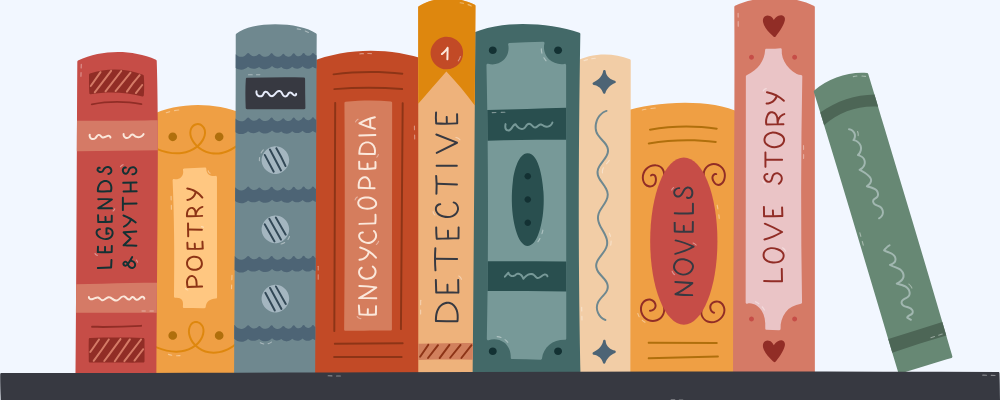A new interview in our 5 questions with series of publishers going green is here!
In this instalment, we had the pleasure of interviewing Invisible Publishing’s publisher Leigh Nash.
A not-for-profit publisher from Picton, ON, Invisible Publishing is passionate about their commitment to the environment across their company – from printing their books in small batches on sustainable paper, to switching to sustainable packaging and purchasing carbon offsets.
Without further ado, here are Leigh’s answers to our questionnaire.
1. Why green your publishing? What are some of the business reasons that led your company to incorporate environmental sustainability as a goal?
We’re trying to green our publishing practise because it’s the responsible thing to do. We’re fortunate to work with a printer who highlighted environmentally friendly paper for us about five years ago (specifically, Rolland Enviro Book) — I’d naively assumed that all book-making paper was 100% recycled. I was way off! One of my personal goals is to have a light environmental footprint, and that paper discussion got me thinking about other ways in which publishing affects the environment and contributes to emissions. Books are dense, meaning they’re heavy and take up a lot of shipping space; staff and authors travel for a host of events, which can produce high emissions; the production and dissemination of physical promotional materials (like advance reading copies, catalogues, and other ephemera) chews up more paper and postage; reading devices for ebooks require the mining of resources from the earth. That all adds up.
Invisible is a not-for-profit company, and in addition to publishing books, one of our core mandates is to build literary community. We want that community to still be reading books even after we’re long gone, and the best way for that to happen is to ensure our practices are sustainable. There’s no point in publishing books if no one is around to read them!
Frost & Pollen by Helen Hajnoczky, Life Is Like Canadian Football and Other Authentic Folk Songs by Henry Adam Svec, The Pump by Sydney Warner Brooman, and The Quiet Is Loud by Samantha Garner.
2. Of the green initiatives you have implemented, which one made the biggest impact?
If the online calculators are to be believed, it’s printing with Rolland Enviro Paper. Paper standards are all over the map, and there’s no singular definition of ‘eco-friendly’ paper. Thankfully there are organizations like Canopy trying to make that information more widely available.
3. What resources or tools have you used to benchmark and keep track of your company's environmental impact? And how do you know when you’ve been successful with your initiatives?
This is the part that’s still a big work-in-progress for us. To date our work has been largely ad hoc — reducing our plastic use (no more bubble mailers!), paying for carbon offsets to counter any staff travel. One of our 2022 resolutions is to begin to codify/formalize our green practices. We’ve started by sharing our sustainability goals on our website. But we’re firm believers that it’s better to just get started.
4. How do you investigate the sustainability of your supply chain partners (distributors, retailers, printers, shippers, etc.)? Is having supply chain partners that also support environmental sustainability important to you?
Most publishers outsource different parts of the publishing process, and any time work is outsourced you lose a little bit of control over it. Partnering with like-minded organizations is important to us at Invisible, but as a small firm we also recognize we have small buying power. Our approach has been to clean up our own practices first — in an airplane situation, we’d be putting on our own masks! — before we approach others.
5. What roadblocks do you face within the industry when trying to implement sustainable practices? What broader industry commitments need to be made to make the book industry more environmentally sustainable?
The roadblocks can be substantial, especially for small companies. Financial ones are big: it costs more per unit to print fewer books, and to purchase carbon offsets and cardboard mailers. We’re a not-for-profit company that only publishes 10 books per year, so our financial resources are limited — we spend a lot of time scouring the internet for the best deals. We’re located off a major highway route, which means longer trucking times and higher freight costs — and emissions.
We rent our office space, and have no control over where our electricity comes from, nor do we have that kind of control over our distributors or other retailers.
I’d love to see subsidy programs for independent booksellers to run on green energy or to help offset carbon from shipping (for orders and returns), or programs that incentivize printers to work with 100% recycled and ancient forest-friendly papers, vegetable inks, or programs for small businesses to work with Canadian-based web hosts/data centres (a bonus if those hosts also meet certain environmental certifications like our favourite provider, Varial Hosting).
BONUS: We all know that achieving these goals is an ongoing process, but what do you think are some quick wins for organizations or even individual employees?
Get rid of your bubble mailers! Reduce your single-use plastic and use recycled paper for all office printing, even if you can’t make it work for printing your books. It’s better to start small than not at all!
Thank you, Leigh, for taking the time to answer our questionnaire! See more interviews with publishers about their sustainability efforts here.
Are you a Canadian independent bookseller or small publisher interested in being featured in our 5 questions with blog series? Send us an email!

















Find out what titles made it to the July 2025 Loan Stars Adult Canadian list.